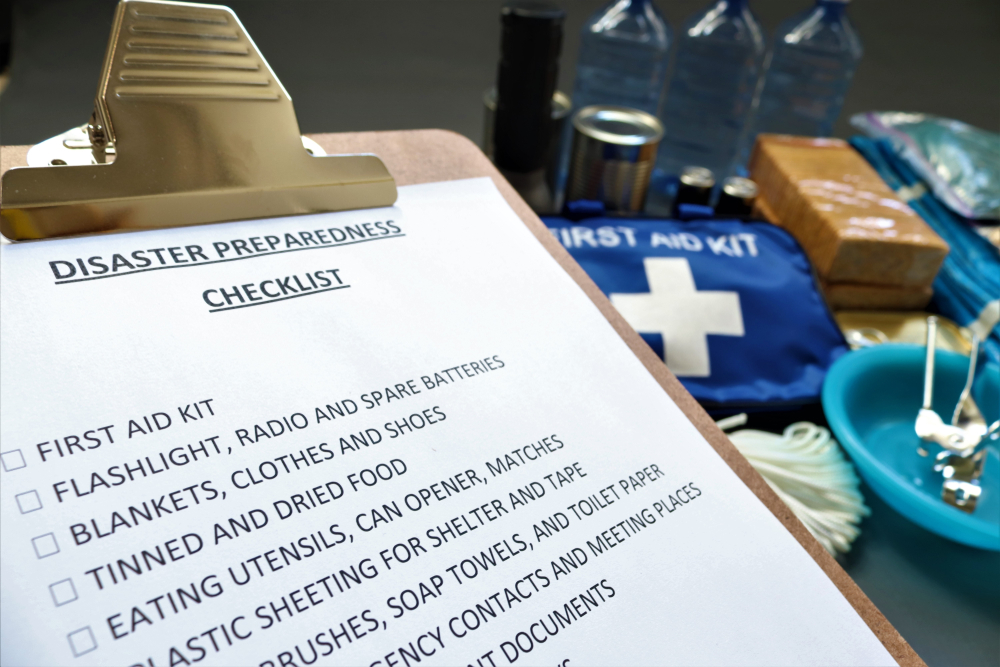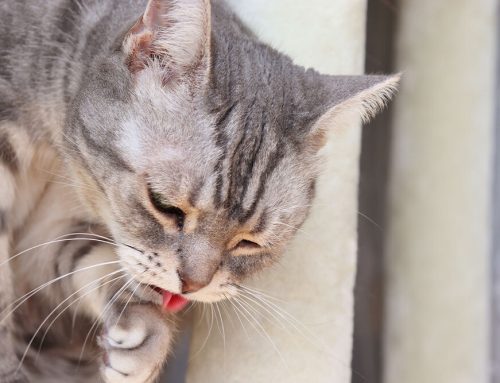You have a lot to remember when caring for your pet, from veterinary visits, to park play dates, to ensuring that their favorite treats and toys are well-stocked. Pets are our family, and ensuring that your pet is prepared for a disaster or an emergency is a critical part of responsible pet ownership. The Federal Emergency Management Agency (FEMA) has declared May 8 National Animal Disaster Preparedness Day, to ensure pet owners are informed and ready to act should an unexpected disaster strike. Our Stack Animal Hospital team understands the stress of dealing with a disaster, so we have compiled five ways to ensure you are prepared to care for your pet in any emergency.
#1: Prepare a pet emergency plan
The stress and worry associated with any disaster can make quick decisions and action difficult. However, preparing a pet emergency plan can ease decision-making stress, and ensure you are ready to respond at a moment’s notice. Ensure your pet’s emergency plan includes the following:
- A pet evacuation plan — Ensure you have a safe place for your pet. Many hotels do not allow pets, so make a list of pet-friendly shelters, hotels, and boarding facilities near your evacuation route. Consider contacting your local emergency management office, if you are unsure who will take your pet during a mandatory evacuation.
- A back-up care plan — Contact your neighbors, friends, or relatives, to ensure someone is available to care for your pet, if you cannot.
- Pet emergency plan checklist — Create a checklist to ensure you don’t forget any necessary steps in your disaster plan.
#2: Build a pet emergency and first aid kit
In addition to a human survival kit, separate pet-specific kits are vital, to ensure you are always prepared. Two kits are better than one—a larger kit for sheltering in place, and a lightweight kit for evacuation. Purchase watertight bins or boxes to ensure all supplies stay clean and dry. Your pet emergency kit should include:
- A spare leash, harness, and collar
- A minimum five-day supply of food, water, and medications for each household pet
- Food and water dishes
- Elimination supplies, including waste bags, litter, disposable boxes, and cleaning materials in case of accidents
Change the food and water in the kits every three months to ensure freshness, and check medications routinely to ensure they have not expired.
You may be tempted to share items from your human first aid kit, but a pet-specific kit will ensure you have ample supplies. Remember, pet first aid is never a substitute for veterinary care, but allows you to stabilize your pet prior to professional treatment. Include the following in your pet’s first aid kit:
- Muzzle
- Blunt tip scissors
- Tweezers
- Dawn soap or generic equivalent
- Antibiotic ointment
- Benadryl, or generic equivalent
- Eye dropper or syringes without needles, to give oral medication, or flush wounds
- Digital thermometer
- Elizabethan collar
- Clean towels
- Rubber gloves
- Gauze roll to wrap wounds, or to muzzle an injured pet
- Non-stick bandages or strips of clean cloth to cover wounds
- Self-adhering, non-stick tape
- Lubrication for thermometer, wounds, or eye protection
- Saline solution
- 3% hydrogen peroxide to induce vomiting, used only if directed by your veterinarian
- Pet first aid book
#3: Bring your pet for a veterinary exam
Yearly, or more frequent, veterinary examinations are critical to ensure your pet remains healthy through all life stages. National Animal Disaster Preparedness Day is the perfect time to schedule an appointment to ensure your pet’s vaccinations are current, and their microchip is functioning properly. A microchip is the safest, most effective, and only permanent means of identifying your pet. Pets may become displaced during natural disasters, and those with a microchip are much more likely to be reunited with their family. Ensure your pet’s microchip registration is updated with current contact information, and that your pet’s vaccinations are up-to-date, since most shelters and pet-friendly hotels require proof of vaccination.
#4: Keep all pet-related records up-to-date and accessible
Whether you are evacuating with your pet or sheltering at home during a natural disaster, you must be prepared with your pet’s paperwork, especially should they need veterinary care. This information is also helpful when a shelter or boarding facility is caring for your pet. Keep digital and hard copies of all pertinent pet records, laminated or printed on waterproof paper, if possible. Important records to place in your pet emergency kit include:
- Number and address of your family veterinarian, and the closest veterinary emergency hospitals along your evacuation route
- List of your pet’s medications and dosing instructions
- Copy of your pet’s vaccination records and any significant medical history
- Your pet’s microchip number and registration information
- A current photo of your pet
- ASPCA Animal Poison Control number
- Your pet health insurance policy number
#5: Provide your pet with a calm and comfortable environment

Evacuating, or sheltering in place, during an emergency can cause anxiety in pets, including normally calm pets. Many are sensitive to environmental changes, and providing them with a safe, comfortable, and calm environment is vital. Ensure you provide your pet with these comfort items:
- Favorite bed, toy or stuffed animal, and blanket
- Pheromone calming spray, such as Adaptil or Feliway
- Long lasting treats, chews, or puzzle toys, to prevent boredom
- Well-ventilated and size-appropriate crate that is large enough for your pet to stand up and lie down, and labeled with your name and phone number, and your pet’s name
Call our Stack Veterinary Hospital office if you have any questions about your pet’s disaster preparedness plan, or to schedule an appointment to ensure their microchip is functioning properly, and their vaccinations are current.







Leave A Comment